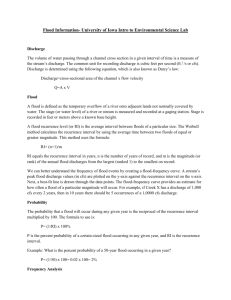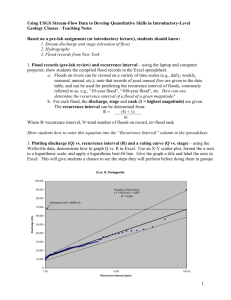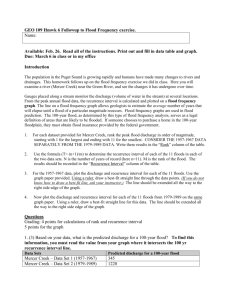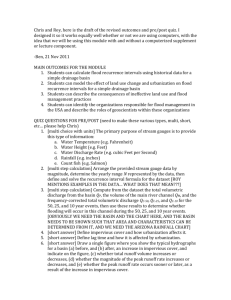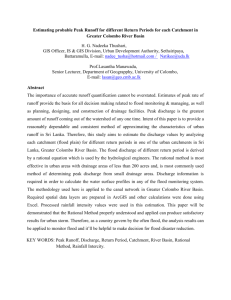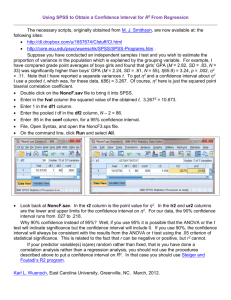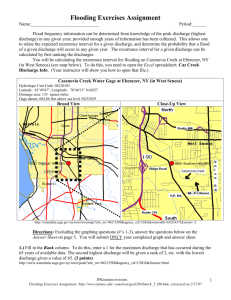Flood-Probability-Worksheet
advertisement
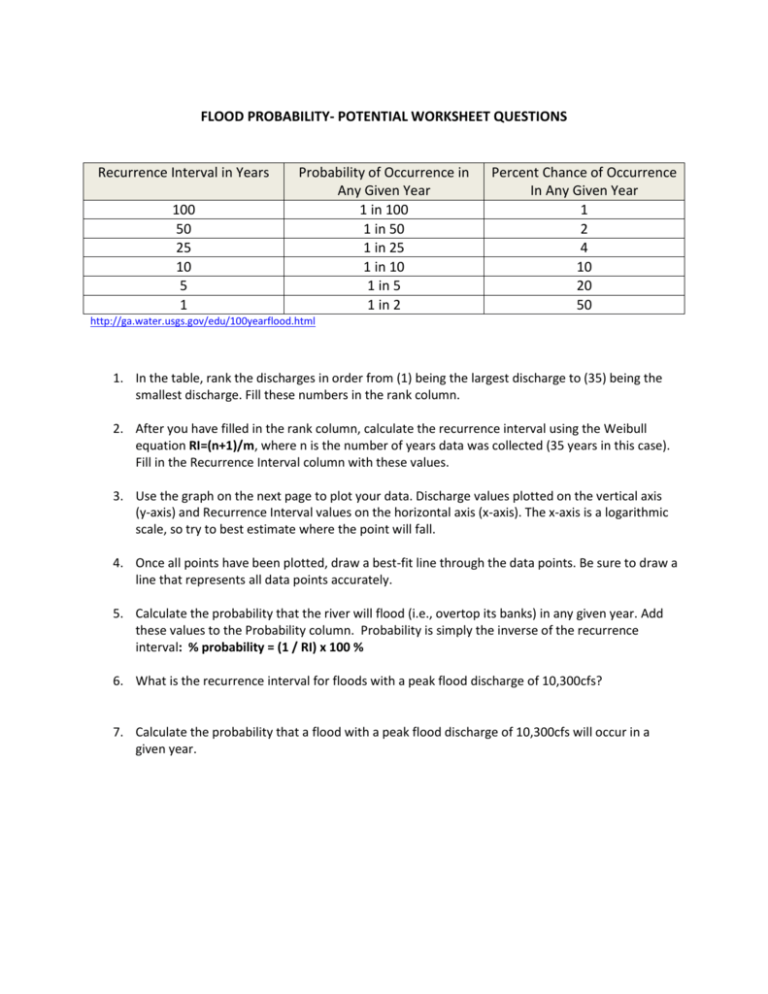
FLOOD PROBABILITY- POTENTIAL WORKSHEET QUESTIONS Recurrence Interval in Years 100 50 25 10 5 1 Probability of Occurrence in Any Given Year 1 in 100 1 in 50 1 in 25 1 in 10 1 in 5 1 in 2 Percent Chance of Occurrence In Any Given Year 1 2 4 10 20 50 http://ga.water.usgs.gov/edu/100yearflood.html 1. In the table, rank the discharges in order from (1) being the largest discharge to (35) being the smallest discharge. Fill these numbers in the rank column. 2. After you have filled in the rank column, calculate the recurrence interval using the Weibull equation RI=(n+1)/m, where n is the number of years data was collected (35 years in this case). Fill in the Recurrence Interval column with these values. 3. Use the graph on the next page to plot your data. Discharge values plotted on the vertical axis (y-axis) and Recurrence Interval values on the horizontal axis (x-axis). The x-axis is a logarithmic scale, so try to best estimate where the point will fall. 4. Once all points have been plotted, draw a best-fit line through the data points. Be sure to draw a line that represents all data points accurately. 5. Calculate the probability that the river will flood (i.e., overtop its banks) in any given year. Add these values to the Probability column. Probability is simply the inverse of the recurrence interval: % probability = (1 / RI) x 100 % 6. What is the recurrence interval for floods with a peak flood discharge of 10,300cfs? 7. Calculate the probability that a flood with a peak flood discharge of 10,300cfs will occur in a given year. Year 1976 1977 1978 1979 1980 1981 1982 1983 1985 1986 1987 1988 1989 1990 1991 1992 1993 1994 1995 1996 1997 1998 1999 2000 2001 2002 2003 2004 2005 2006 2007 2008 2009 2010 Peak Flood Discharge (cfs) 1030 3540 3360 2590 632 1050 6520 1940 1810 4100 809 1660 1040 10200 1180 1220 6760 864 1910 4350 2830 1160 2900 1950 1860 1700 632 987 500 515 2380 2840 3510 2210 FLOOD DATA TABLE Rank (m) Recurrence Interval Probability of Occurrence
